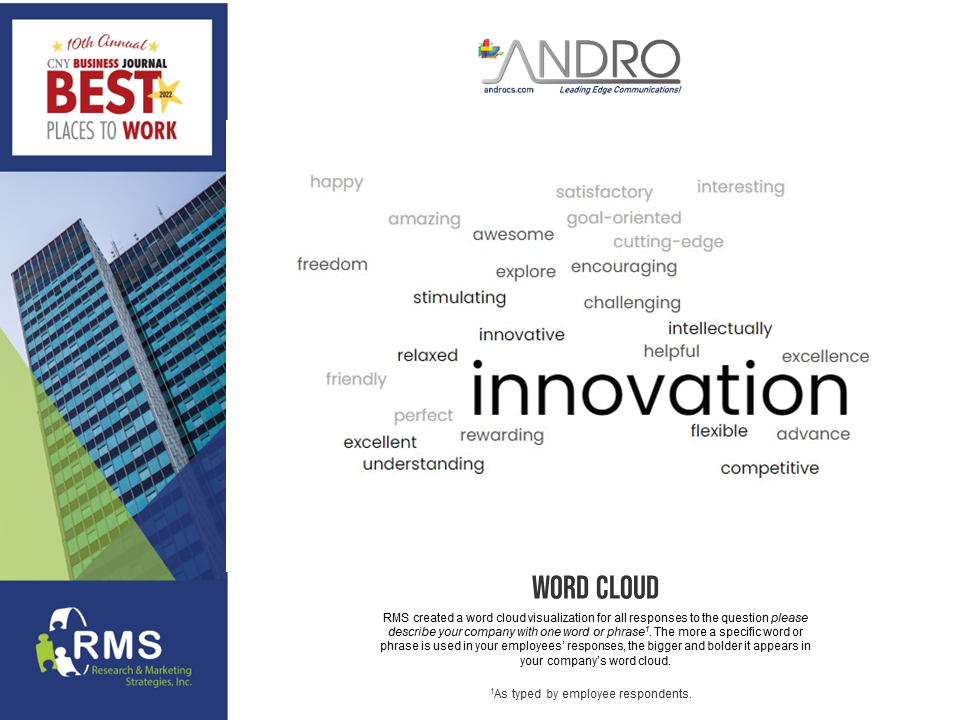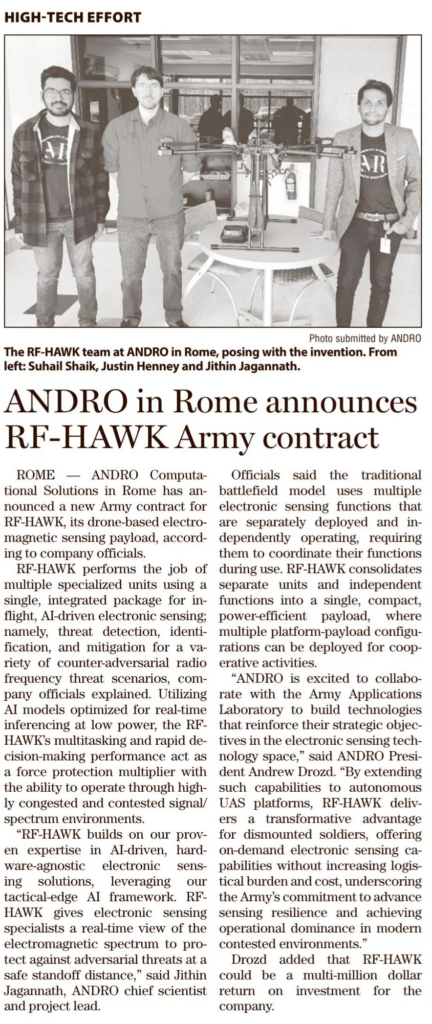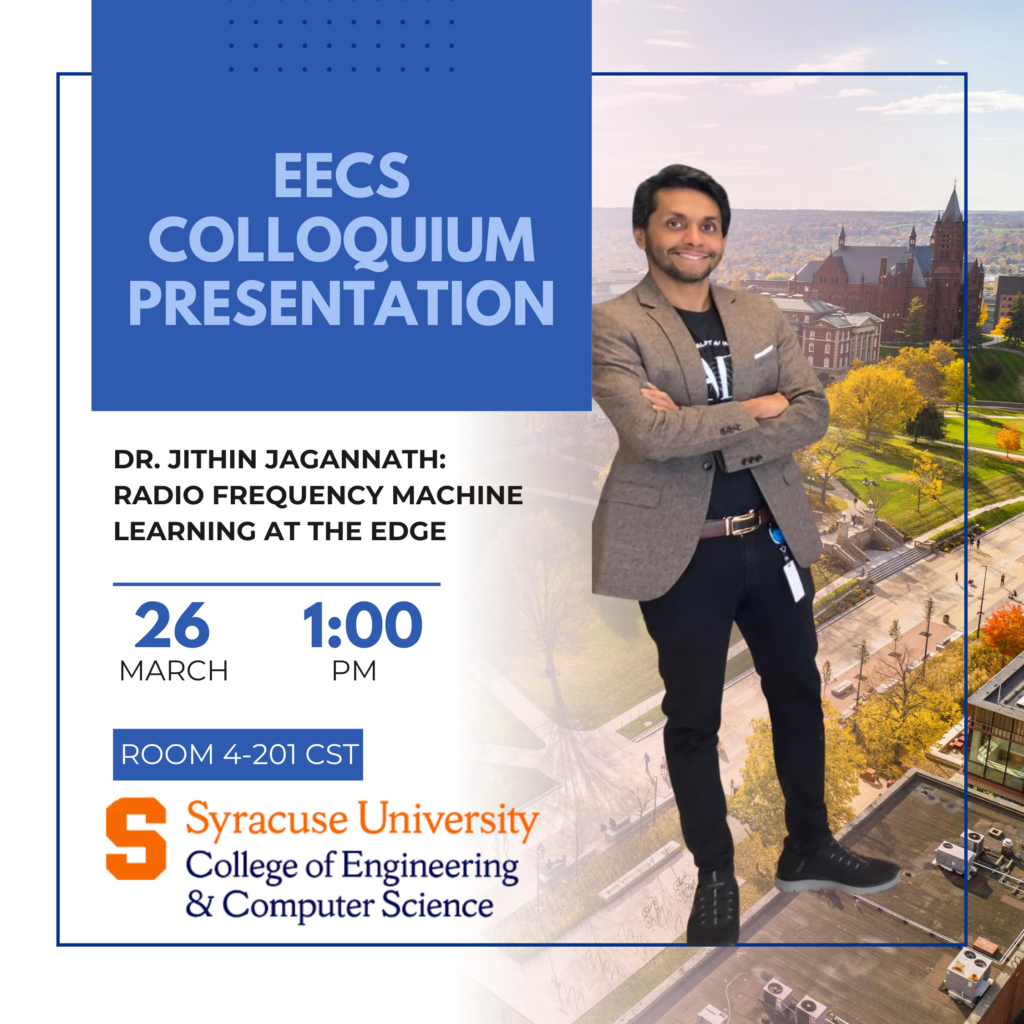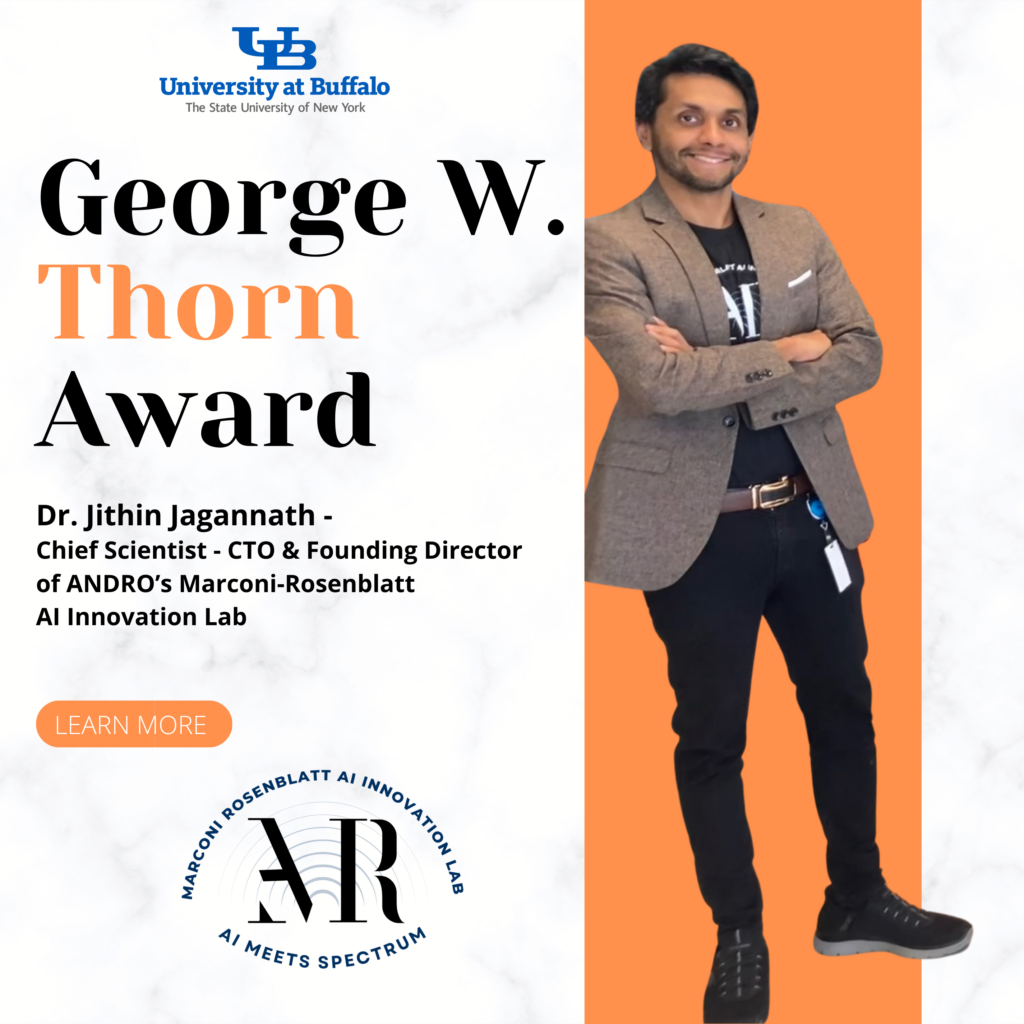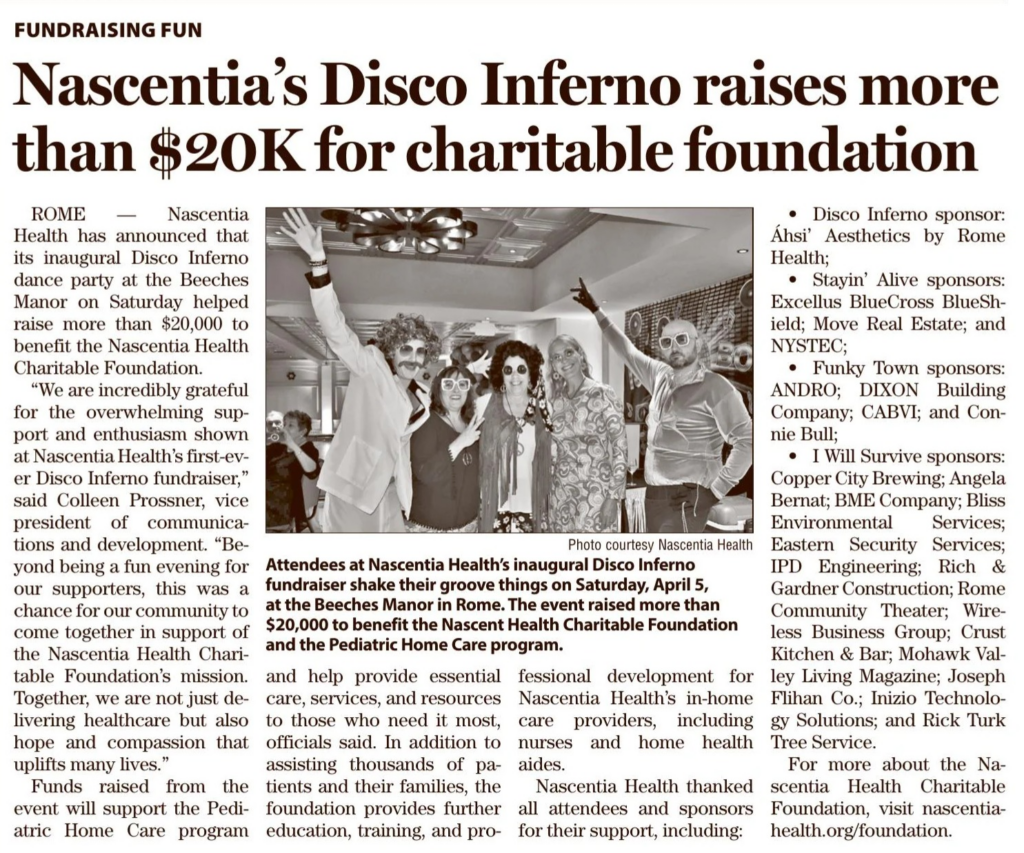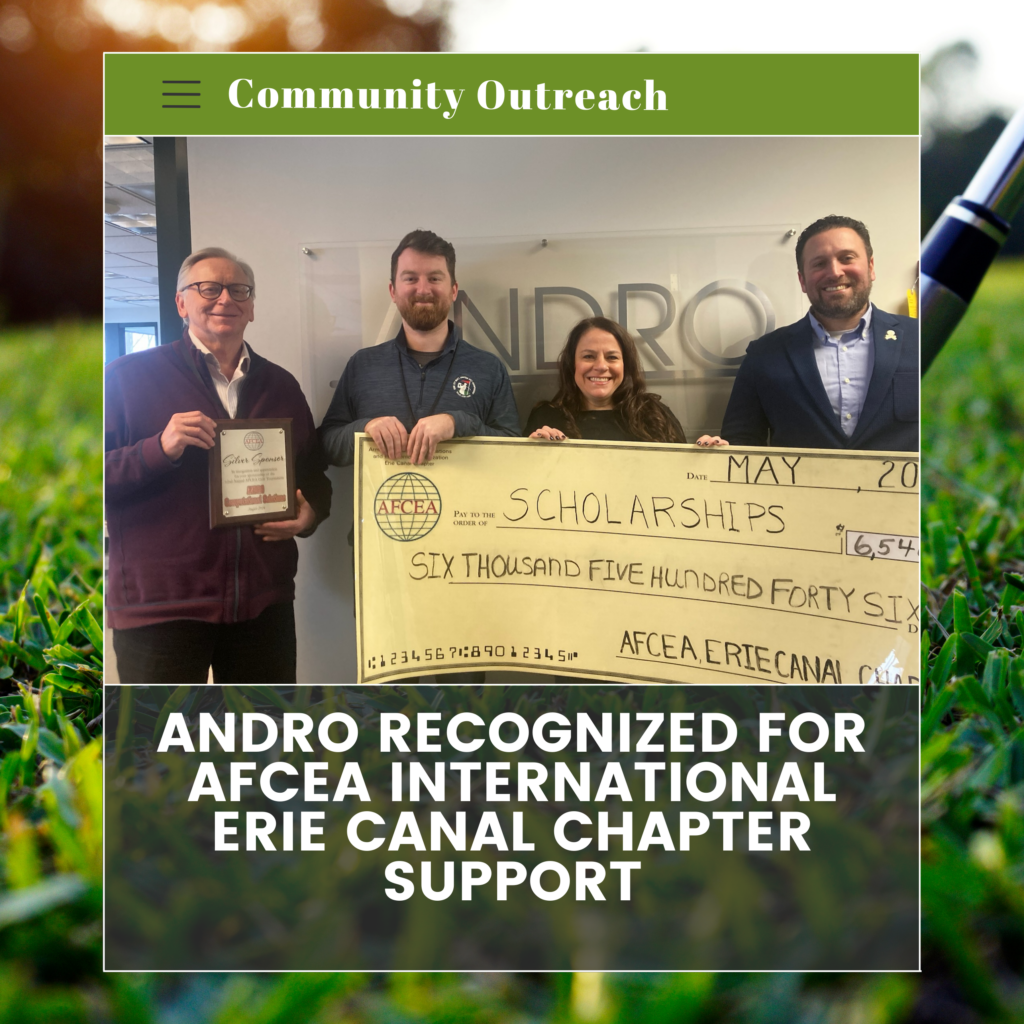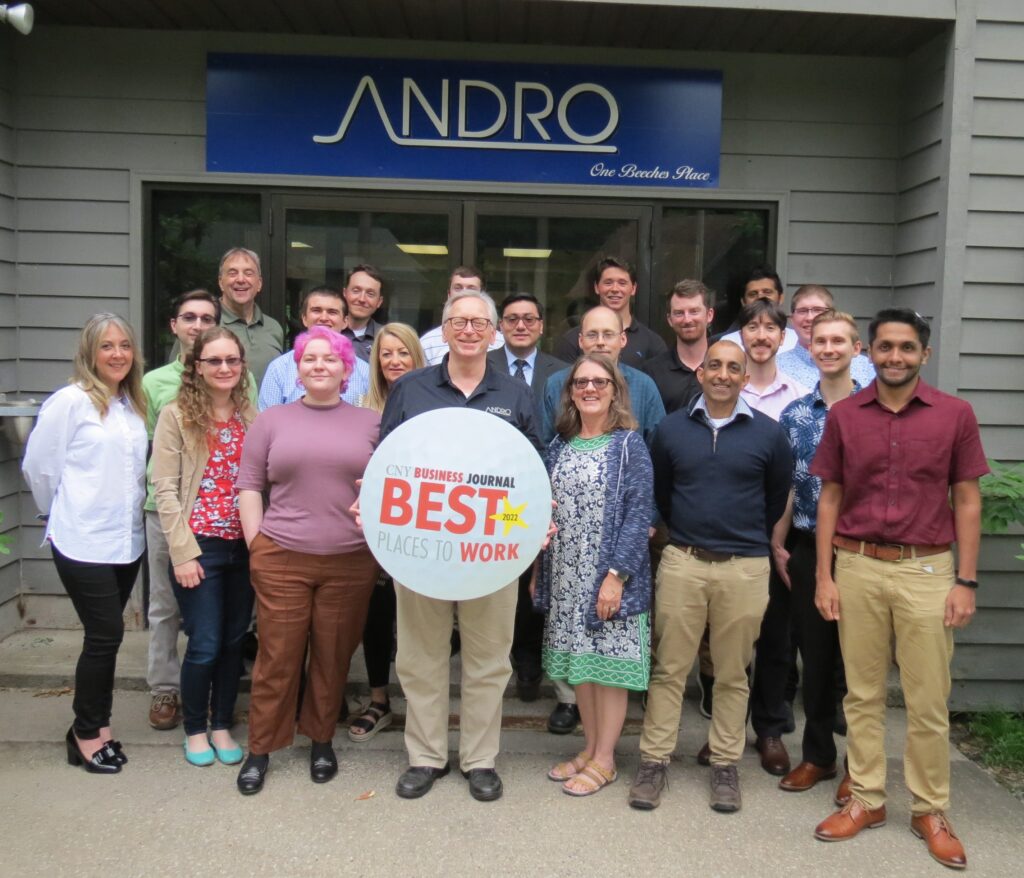
ANDRO Computational Solutions, LLC has been ranked as one of the Best Places to Work in Central New York by the Central New York Business Journal.
Best Places to Work recognizes and celebrates Central New York’s leading employers. The Business Journal considers the best companies to be those which foster a great place to work, are innovative, promote technology, offer people-focused programs, and have great leadership. ANDRO met or exceeded these selection criteria.
ANDRO, a privately-owned company established in 1994, has been dedicated to research, development, and the application of advanced computer software for a variety of defense and commercial applications. ANDRO’s diverse portfolio includes research and development in applying artificial intelligence and machine learning for dynamic spectrum management and spectrum exploitation, cyber-secure wireless communications, cognitive software defined radios and networks, multi-sensor and multi-target tracking, advanced radar data fusion and sensor resource management.
ANDRO continues to not only make a mark in the community with its technological achievements, but with outreach and support for several local organizations and efforts. Over the past 28 years, ANDRO has been an avid supporter of the Central New York community with a focus on workforce development, motivating youth through STEM plus Arts (STEAM) leadership education, and an overall support of economic development.
Past organizations that ANDRO has supported include the Armed Forces Communications and Electronics Association (AFCEA), Kicks for Kids Foundation, Rome Art and Community Center, Rome Capitol Theatre, the Project Fibonacci Foundation, Inc., CNY Food Bank, Cure Sanfilippo Foundation, Rome Area Chamber of Commerce, American Heart Association, Bellamy Awards, United Way and FIRST Robotics, to name a few.
To stay competitive in today’s recruitment efforts, ANDRO values its vast benefits to entice entry level and senior staff members by providing full medical coverage, paid time off, tuition assistance, life insurance, and the opportunity to grow with a locally-owned and operated company. Visit www.androcs.com for more information on ANDRO, including job placement opportunities. The company is in the process of expanding its operations and more information on this is forthcoming.
Rankings of the CNY Business Journal Best Places to Work in CNY will be announced at its golf event and reception on Sept. 12 at the Timber Banks in Baldwinsville, Onondaga County.
